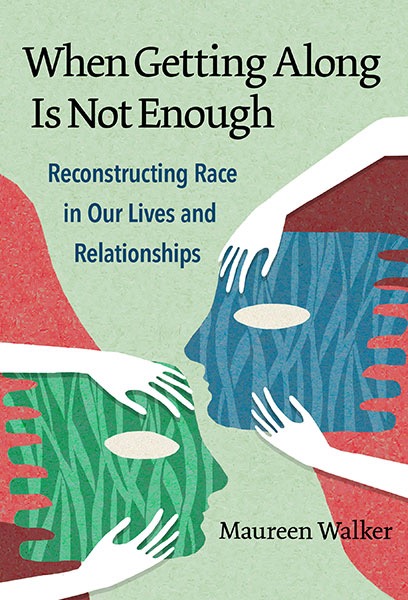race
Select an item by clicking its checkbox
Date Reviewed: June 17, 2021
Date Reviewed: June 22, 2021
Book Features:
- Presents a new way of understanding race as a relational dynamic and racism as a symptom of disconnection.
- Synthesizes, for the first time, two important systems of thought: relational-cultural theory and race/social identity theory.
- Includes “Pause to Reflect” exercises designed to stimulate group conversations in book clubs, social justice groups, staff development, classrooms, and workplace training.
- Offers practical, everyday solutions for people of different races to better understand and accept one another. (From the Publisher)
At the time of this conversation, Eric Barreto was on the faculty at Luther Seminary, but he has since joined the faculty at Princeton Theological Seminary. His teaching practice is informed by his bi-regional and multi-lingual backgrounds. The biblical text and the ancient world are sites for destabilizing contemporary notions about the stability of historical conceptions of the possibility/ies of living harmoniously within diverse communities.
The “I” That Teaches - A new video project that invites senior scholars to talk about their teaching lives. These scholar-teachers candidly discuss how religious, educational, and family backgrounds inform their vocational commitments and, also, characterize their teaching persona. From the vantage point of a practiced teaching philosophy we get an intimate account of the value and art of teaching well.
Click here to watch all episodes of "The "I" That Teaches" on YouTube
See Also:

This Is Not a Test: A New Narrative on Race, Class, and Education
Date Reviewed: April 8, 2015
At first blush, Jose Luis Vilson’s book does not seem to fit well in a discussion of theological graduate education. After all, he is a middle school math teacher in New York City, concerned with the Common Core State Standard and bulletin boards (112-14). As the subtitle suggests, the book is narrative, a conglomeration of stories divided into three parts and chapters with titles that evoke emotion but do not lend themselves to a chronological flow or pattern. Given Vilson’s predilection for poetry and music, this is both understandable and welcome. The stories within each part jump around chronologically, but the three parts seem to revolve around Vilson’ own educational journey, his journey as an educator, and his journey as an educational activist. What comes through in each section is Vilson’s passion for education done well and his story-telling skills, both of which make the book a compelling read.
As a sixty-something-year-old white guy who grew up in the South, our narratives, while similar at points, diverge greatly. Vilson’s stories of the tensions in his Dominican-Haitian upbringing, his frustration on what to do with the rat in the bathtub, and his encounter with a racist English teacher in high school fill in gaps in my own story. But he also challenges my story and makes me uncomfortable. I was bothered when he called George Zimmerman a child murderer (149), not because I thought Zimmerman was innocent but because I do not usually think of seventeen-year-olds as children. I do not enjoy being made to feel uncomfortable, but I need to be challenged. Other references to New York City politics, secondary school board issues, and rap music sent me to Google and to Vilson’s blogs and speeches.
Yet many of the secondary-education issues Vilson raises resonate in graduate theological education as well. How do we assess student achievement? In the midst of our clamor for accountability, how do we keep our focus on students? What is the role of technology in the classroom? Does teacher presence really matter?
The most compelling issues raised in the book are highlighted in the subtitle: race, class, and education. In a field where old white guys dominate (graduate theological education), how do we open and maintain a dialogue on the issues of race and class? Do we wait for people of color to broach the subject, or as Vilson’s white friend Chris suggests, do we who are white speak up so people of color do not have to (148)? The answer is obvious.
The book incorporates several events in Vilson’s life that are preserved digitally. I suggest reading “How to Drop the Mic” (157-168) and then watching Vilson’s speech at the Save Our Schools March, or reading the following chapter on teacher voice and then watching Vilson’s TED talk (both can be accessed at https://thejosevilson.com/).
Vilson’s parting words challenge me: “If you can’t teach, then do. Something else is preferable. But if you can’t do, then don’t. As a teacher, I’m in charge of believing you can – so do. If you plan to do, then do this. Go hard or go home” (215).

